Volatility, Growth and Financial Crises
This research group analyses the build-up of financial vulnerabilities and real consequences of financial crises. Different policy shocks and the causal reaction of macroeconomic aggregates are identified. Early-warning models describe the cyclical nature of financial vulnerabilities.
IWH Data Project: Financial Stability Indicators in Europe
Research Cluster
Financial Resilience and RegulationYour contact

Mitglied - Department Macroeconomics
EXTERNAL FUNDING
01.2022 ‐ 12.2023
Sovereign Risk Shocks
Deutsche Bundesbank
05.2017 ‐ 09.2019
Early Warning Models for Systemic Banking Crises: The Effect of Model and Estimation Uncertainty
German Research Foundation (DFG)
01.2018 ‐ 12.2018
International Monetary Policy Transmission
Deutsche Bundesbank
Refereed Publications

A Comparison of Monthly Global Indicators for Forecasting Growth
in: International Journal of Forecasting, No. 3, 2021
Abstract
This paper evaluates the predictive content of a set of alternative monthly indicators of global economic activity for nowcasting and forecasting quarterly world real GDP growth using mixed-frequency models. It shows that a recently proposed indicator that covers multiple dimensions of the global economy consistently produces substantial improvements in forecasting accuracy, while other monthly measures have more mixed success. Specifically, the best-performing model yields impressive gains with MSPE reductions of up to 34% at short horizons and up to 13% at long horizons relative to an autoregressive benchmark. The global economic conditions indicator also contains valuable information for assessing the current and future state of the economy for a set of individual countries and groups of countries. This indicator is used to track the evolution of the nowcasts for the U.S., the OECD area, and the world economy during the COVID-19 pandemic and the main factors that drive the nowcasts are quantified.
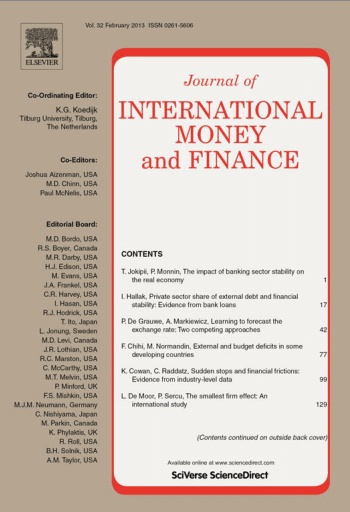
Fiscal Policy and Fiscal Fragility: Empirical Evidence from the OECD
in: Journal of International Money and Finance, July 2021
Abstract
In this paper, we use local projections to investigate the impact of consolidation shocks on GDP growth, conditional on the fragility of government finances. Based on a database of fiscal plans in OECD countries, we show that spending shocks are less detrimental than tax-based consolidation. In times of fiscal fragility, our results indicate strongly that governments should consolidate through surprise policy changes rather than announcements of consolidation at a later horizon.
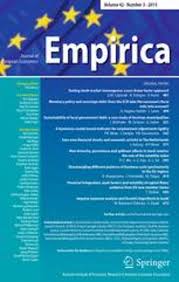
The Appropriateness of the Macroeconomic Imbalance Procedure for Central and Eastern European Countries
in: Empirica, No. 1, 2021
Abstract
The European Commission’s Scoreboard of Macroeconomic Imbalances is a rare case of a publicly released early warning system. It was published first time in 2012 by the European Commission as a reaction to public debt crises in Europe. So far, the Macroeconomic Imbalance Procedure takes a one-size-fits-all approach with regard to the identification of thresholds. The experience of Central and Eastern European Countries during the global financial crisis and in the resulting public debt crises has been largely different from that of other European countries. This paper looks at the appropriateness of scoreboard of the Macroeconomic Imbalances Procedure of the European Commission for this group of catching-up countries. It is shown that while some of the indicators of the scoreboard are helpful to predict crises in the region, thresholds are in most cases set too narrow since it largely disregarded the specifics of catching-up economies, in particular higher and more volatile growth rates of various macroeconomic variables.
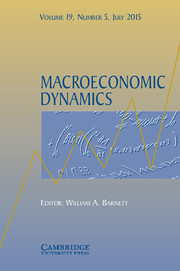
Optimizing Policymakers’ Loss Functions in Crisis Prediction: Before, Within or After?
in: Macroeconomic Dynamics, No. 1, 2021
Abstract
Early-warning models most commonly optimize signaling thresholds on crisis probabilities. The expost threshold optimization is based upon a loss function accounting for preferences between forecast errors, but comes with two crucial drawbacks: unstable thresholds in recursive estimations and an in-sample overfit at the expense of out-of-sample performance. We propose two alternatives for threshold setting: (i) including preferences in the estimation itself and (ii) setting thresholds ex-ante according to preferences only. Given probabilistic model output, it is intuitive that a decision rule is independent of the data or model specification, as thresholds on probabilities represent a willingness to issue a false alarm vis-à-vis missing a crisis. We provide simulated and real-world evidence that this simplification results in stable thresholds and improves out-of-sample performance. Our solution is not restricted to binary-choice models, but directly transferable to the signaling approach and all probabilistic early-warning models.

Drawing Conclusions from Structural Vector Autoregressions Identified on the Basis of Sign Restrictions
in: Journal of International Money and Finance, December 2020
Abstract
This paper discusses the problems associated with using information about the signs of certain magnitudes as a basis for drawing structural conclusions in vector autoregressions. We also review available tools to solve these problems. For illustration we use Dahlhaus and Vasishtha’s (2019) study of the effects of a U.S. monetary contraction on capital flows to emerging markets. We explain why sign restrictions alone are not enough to allow us to answer the question and suggest alternative approaches that could be used.
Working Papers
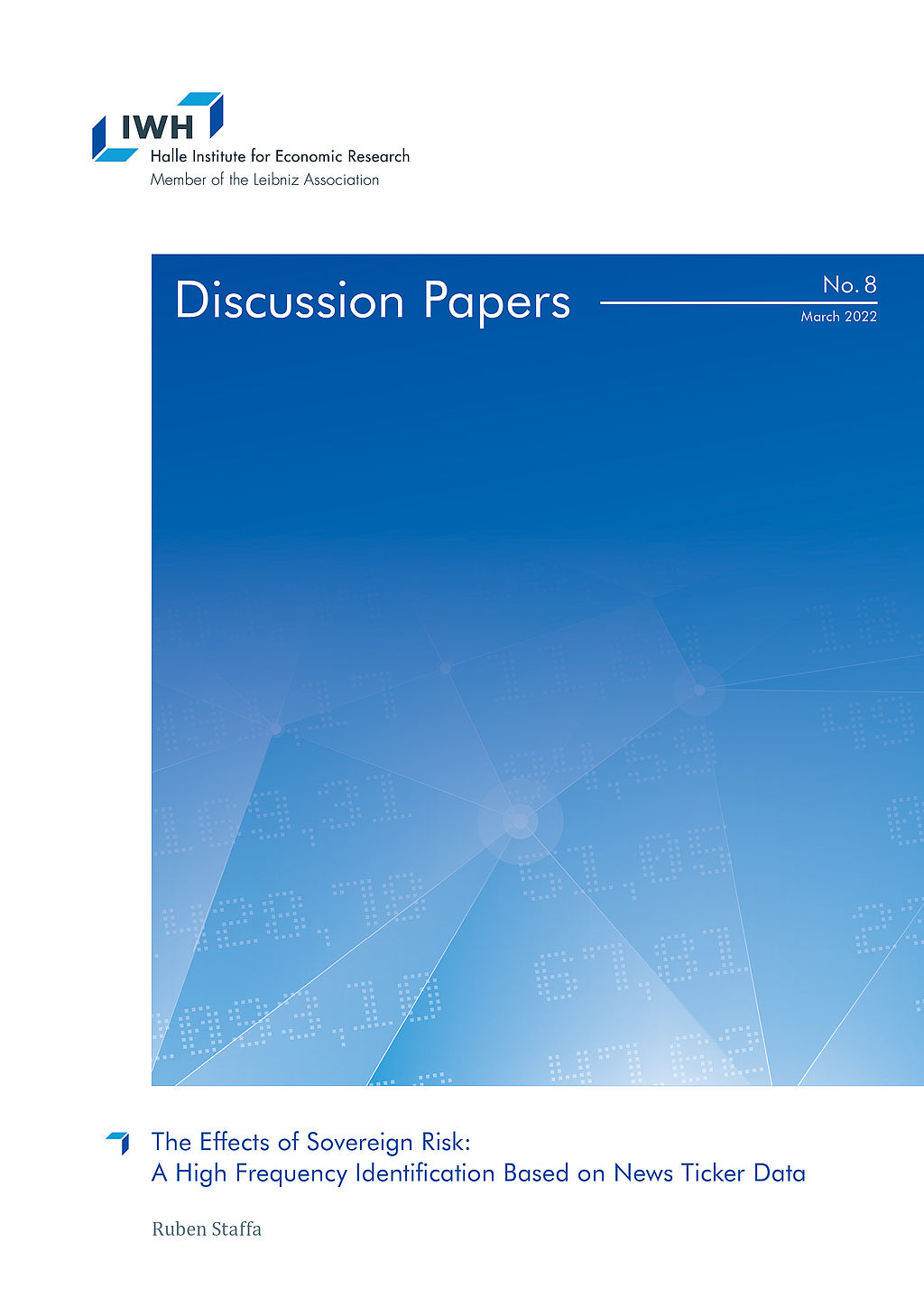
The Effects of Sovereign Risk: A High Frequency Identification Based on News Ticker Data
in: IWH Discussion Papers, No. 8, 2022
Abstract
This paper uses novel news ticker data to evaluate the effect of sovereign risk on economic and financial outcomes. The use of intraday news enables me to derive policy events and respective timestamps that potentially alter investors’ beliefs about a sovereign’s willingness to service its debt and thereby sovereign risk. Following the high frequency identification literature, in the tradition of Kuttner (2001) and Guerkaynak et al. (2005), associated variation in sovereign risk is then obtained by capturing bond price movements within narrowly defined time windows around the event time. I conduct the outlined identification for Italy since its large bond market and its frequent coverage in the news render it a suitable candidate country. Using the identified shocks in an instrumental variable local projection setting yields a strong instrument and robust results in line with theoretical predictions. I document a dampening effect of sovereign risk on output. Also, borrowing costs for the private sector increase and inflation rises in response to higher sovereign risk.
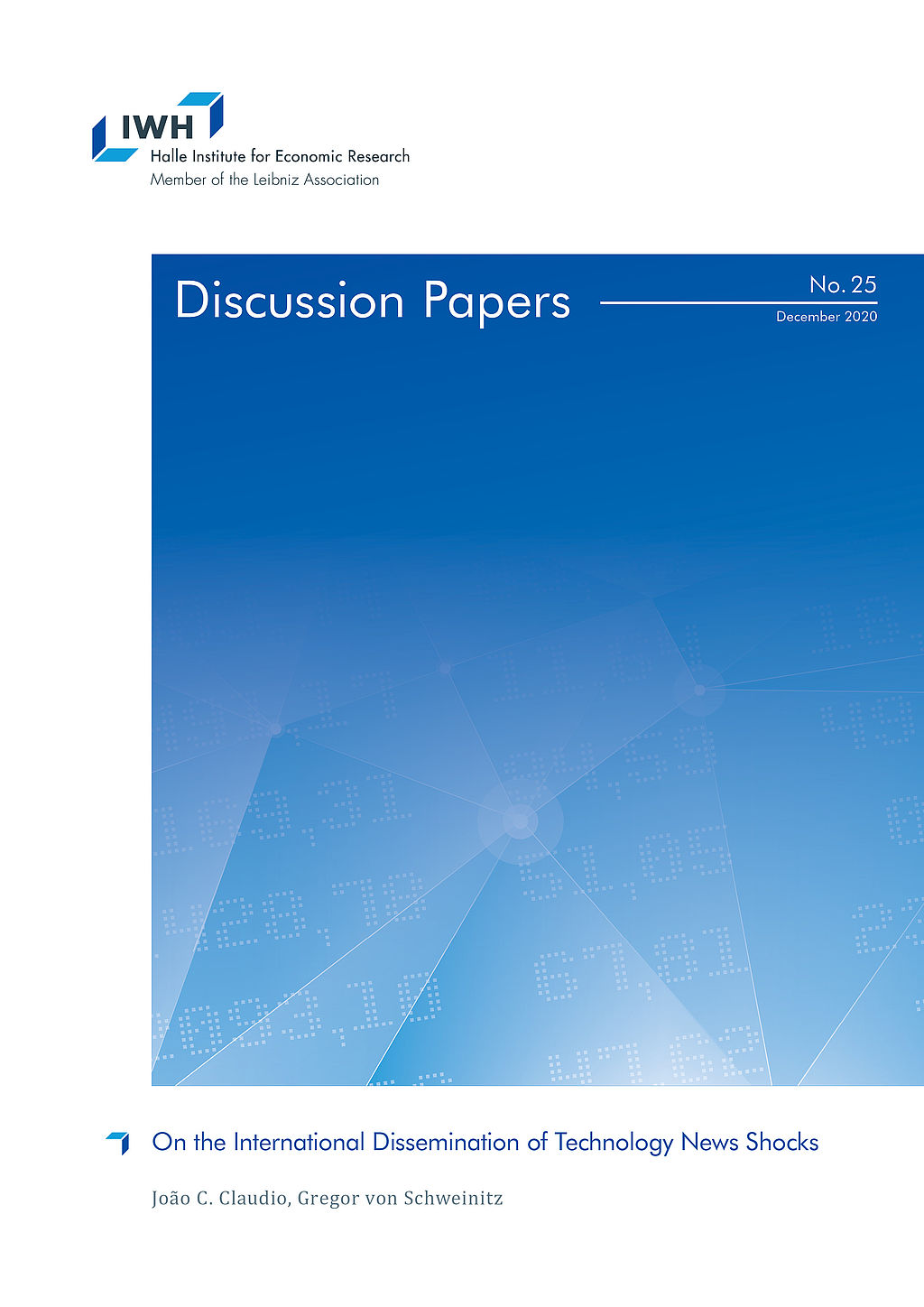
On the International Dissemination of Technology News Shocks
in: IWH Discussion Papers, No. 25, 2020
Abstract
This paper investigates the propagation of technology news shocks within and across industrialised economies. We construct quarterly utilisation-adjusted total factor productivity (TFP) for thirteen OECD countries. Based on country-specific structural vector autoregressions (VARs), we document that (i) the identified technology news shocks induce a quite homogeneous response pattern of key macroeconomic variables in each country; and (ii) the identified technology news shock processes display a significant degree of correlation across several countries. Contrary to conventional wisdom, we find that the US are only one of many different sources of technological innovations diffusing across advanced economies. Technology news propagate through the endogenous reaction of monetary policy and via trade-related variables. That is, our results imply that financial markets and trade are key channels for the dissemination of technology.
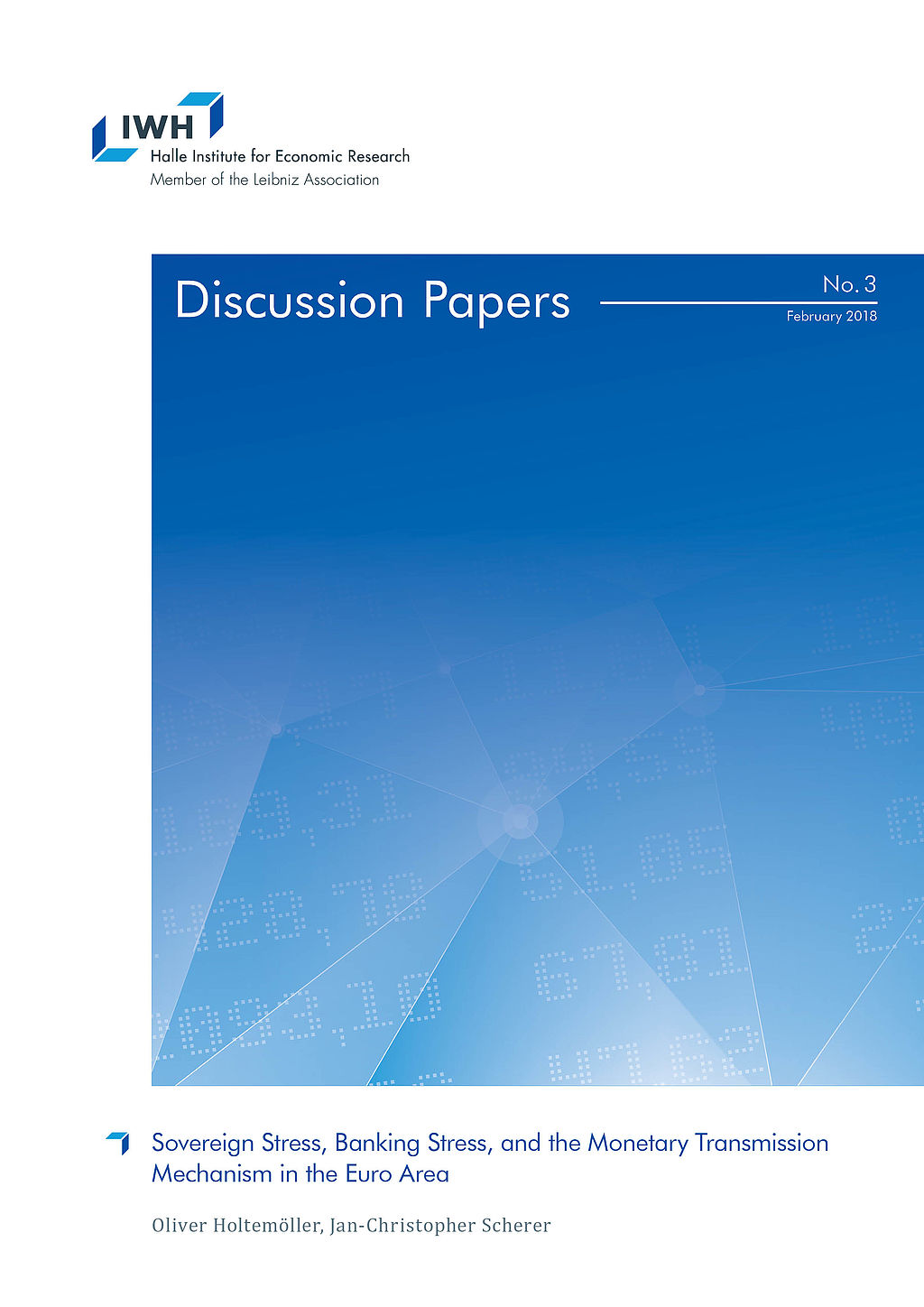
Sovereign Stress, Banking Stress, and the Monetary Transmission Mechanism in the Euro Area
in: IWH Discussion Papers, No. 3, 2018
Abstract
In this paper, we investigate to what extent sovereign stress and banking stress have contributed to the increase in the level and in the heterogeneity of nonfinancial firms’ refinancing costs in the Euro area during the European debt crisis and how they did affect the monetary transmission mechanism. We identify the increasing effect of government bond yield spreads (sovereign stress) and the share of non-performing loans (banking stress) on firms’ financing costs using an instrumental-variable approach. Moreover, we estimate both sources of stress to have significantly impaired the monetary transmission mechanism during the European debt crisis.
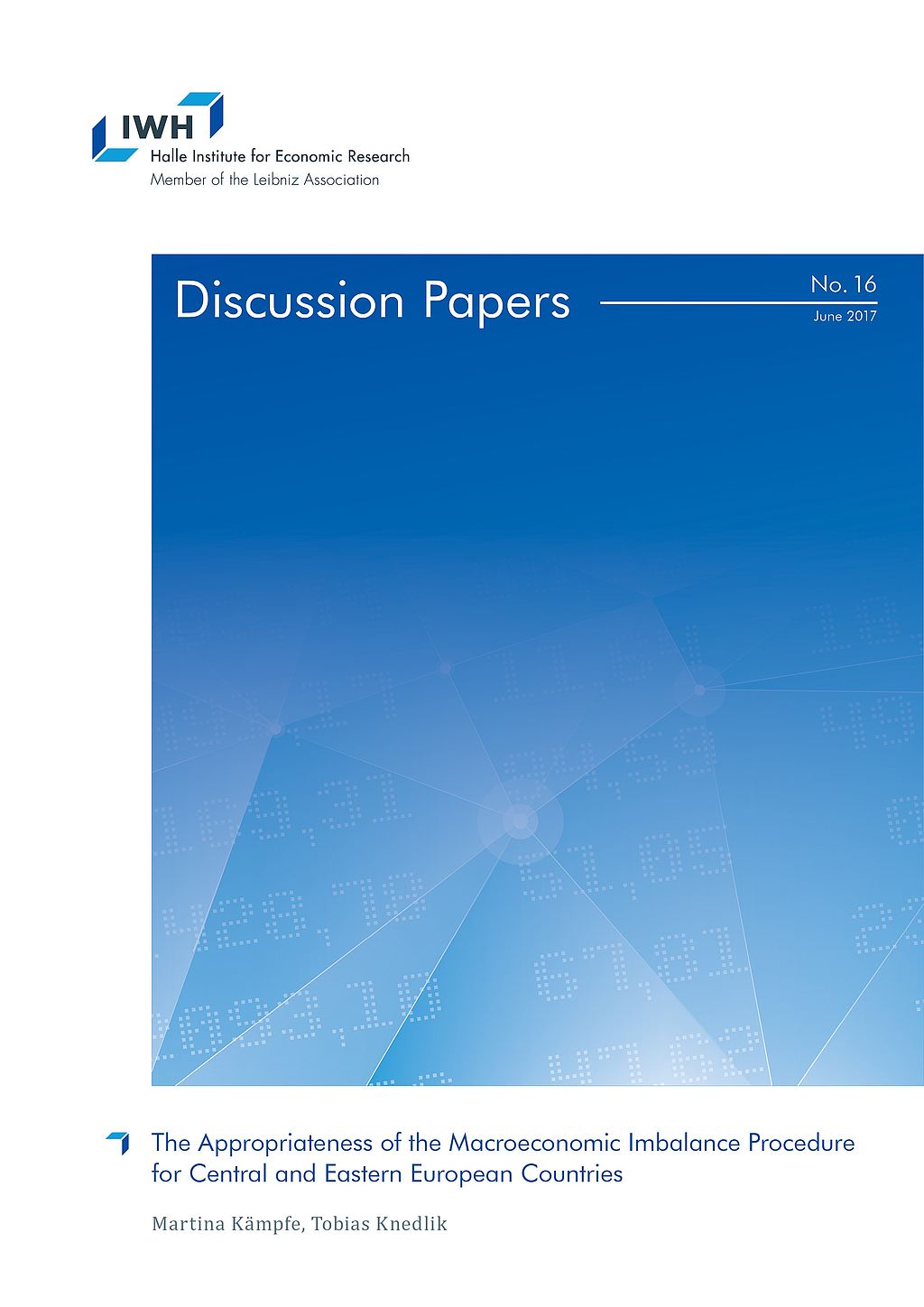
The Appropriateness of the Macroeconomic Imbalance Procedure for Central and Eastern European Countries
in: IWH Discussion Papers, No. 16, 2017
Abstract
The experience of Central and Eastern European countries (CEEC) during the global financial crisis and in the resulting European debt crises has been largely different from that of other European countries. This paper looks at the specifics of the CEEC in recent history and focuses in particular on the appropriateness of the Macroeconomic Imbalances Procedure for this group of countries. In doing so, the macroeconomic situation in the CEEC is highlighted and macroeconomic problems faced by these countries are extracted. The findings are compared to the results of the Macroeconomic Imbalances Procedure of the European Commission. It is shown that while the Macroeconomic Imbalances Procedure correctly identifies some of the problems, it understates or overstates other problems. This is due to the specific construction of the broadened surveillance procedure, which largely disregarded the specifics of catching-up economies.
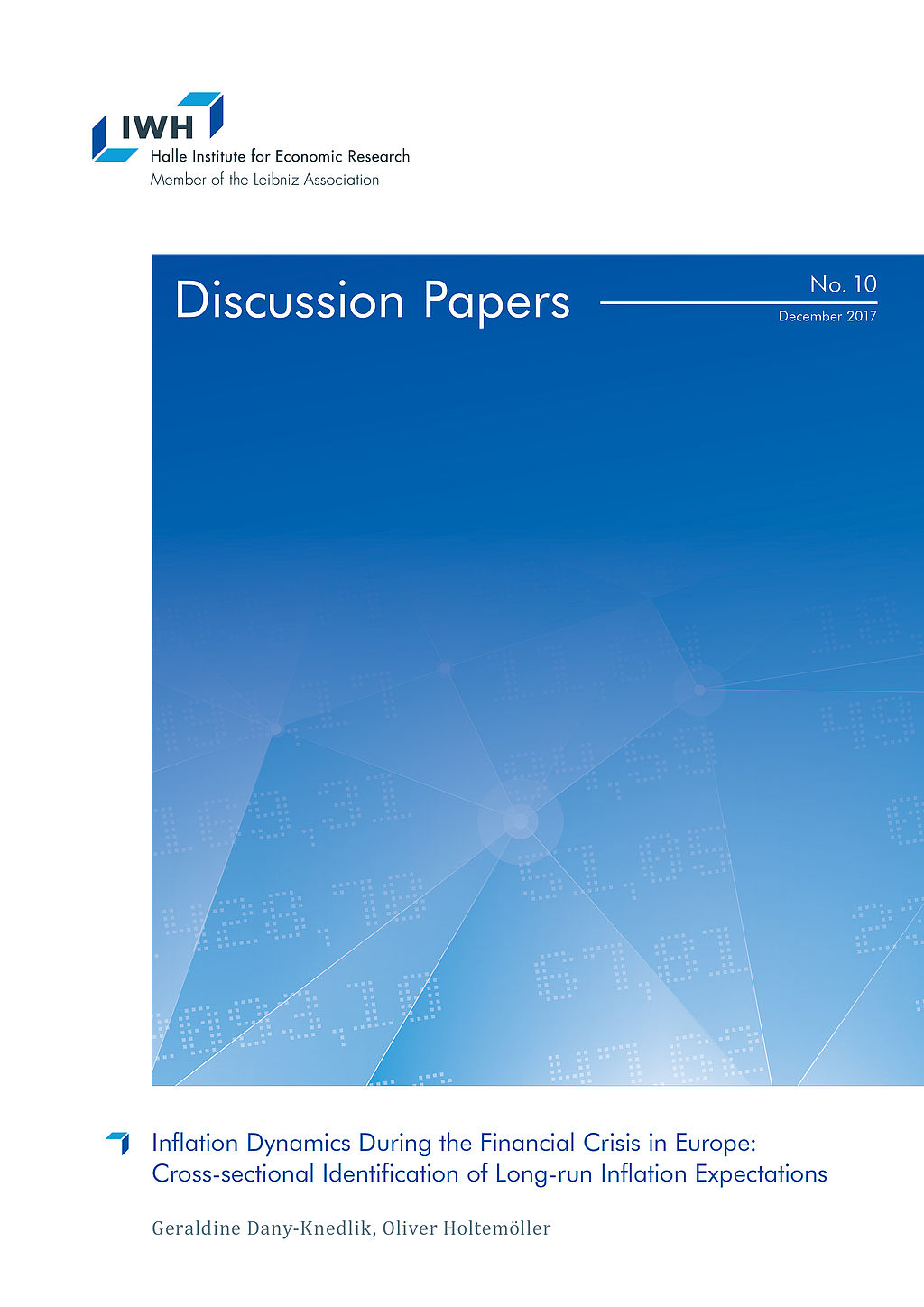
Inflation Dynamics During the Financial Crisis in Europe: Cross-sectional Identification of Long-run Inflation Expectations
in: IWH Discussion Papers, No. 10, 2017
Abstract
We investigate drivers of Euro area inflation dynamics using a panel of regional Phillips curves and identify long-run inflation expectations by exploiting the crosssectional dimension of the data. Our approach simultaneously allows for the inclusion of country-specific inflation and unemployment-gaps, as well as time-varying parameters. Our preferred panel specification outperforms various aggregate, uni- and multivariate unobserved component models in terms of forecast accuracy. We find that declining long-run trend inflation expectations and rising inflation persistence indicate an altered risk of inflation expectations de-anchoring. Lower trend inflation, and persistently negative unemployment-gaps, a slightly increasing Phillips curve slope and the downward pressure of low oil prices mainly explain the low inflation rate during the recent years.















